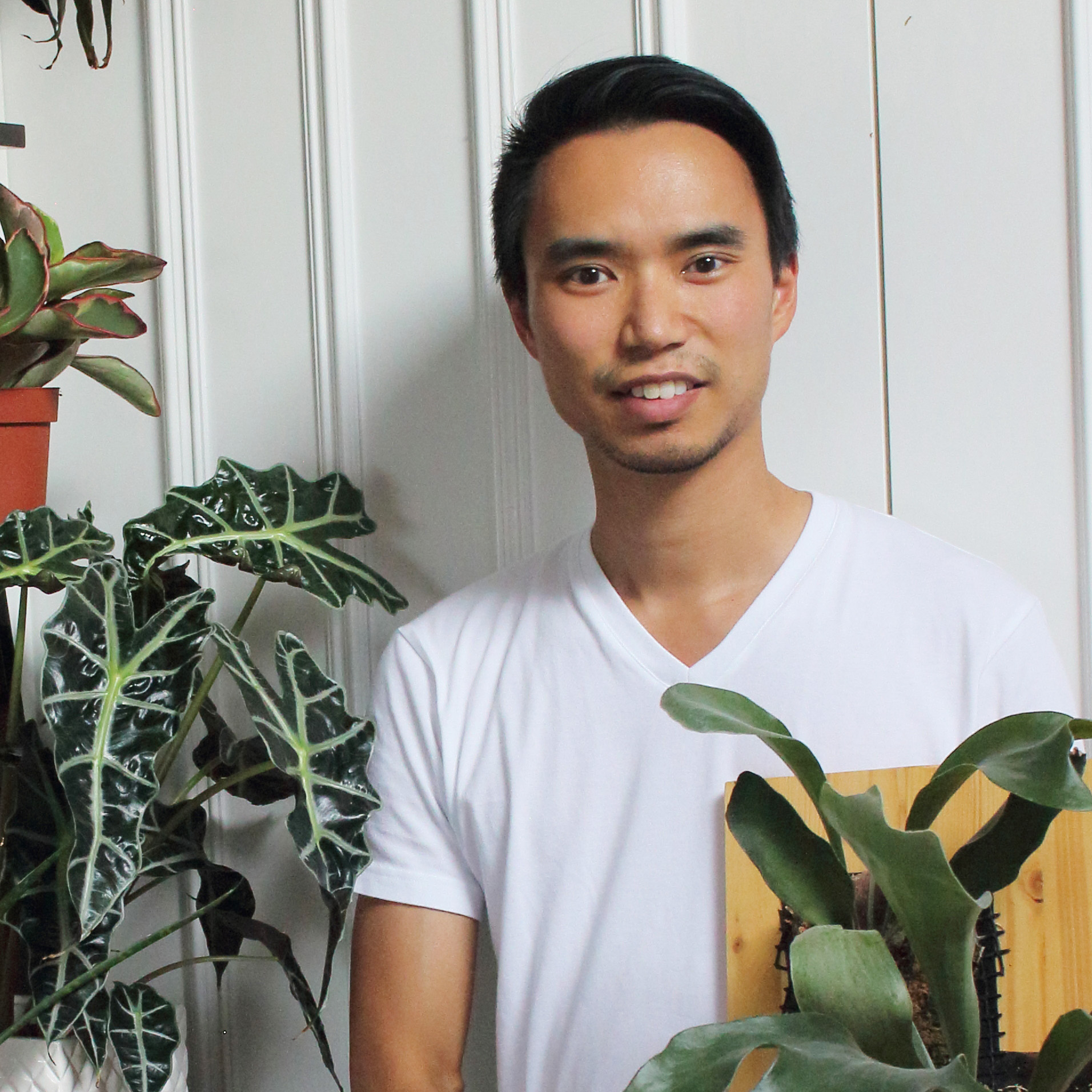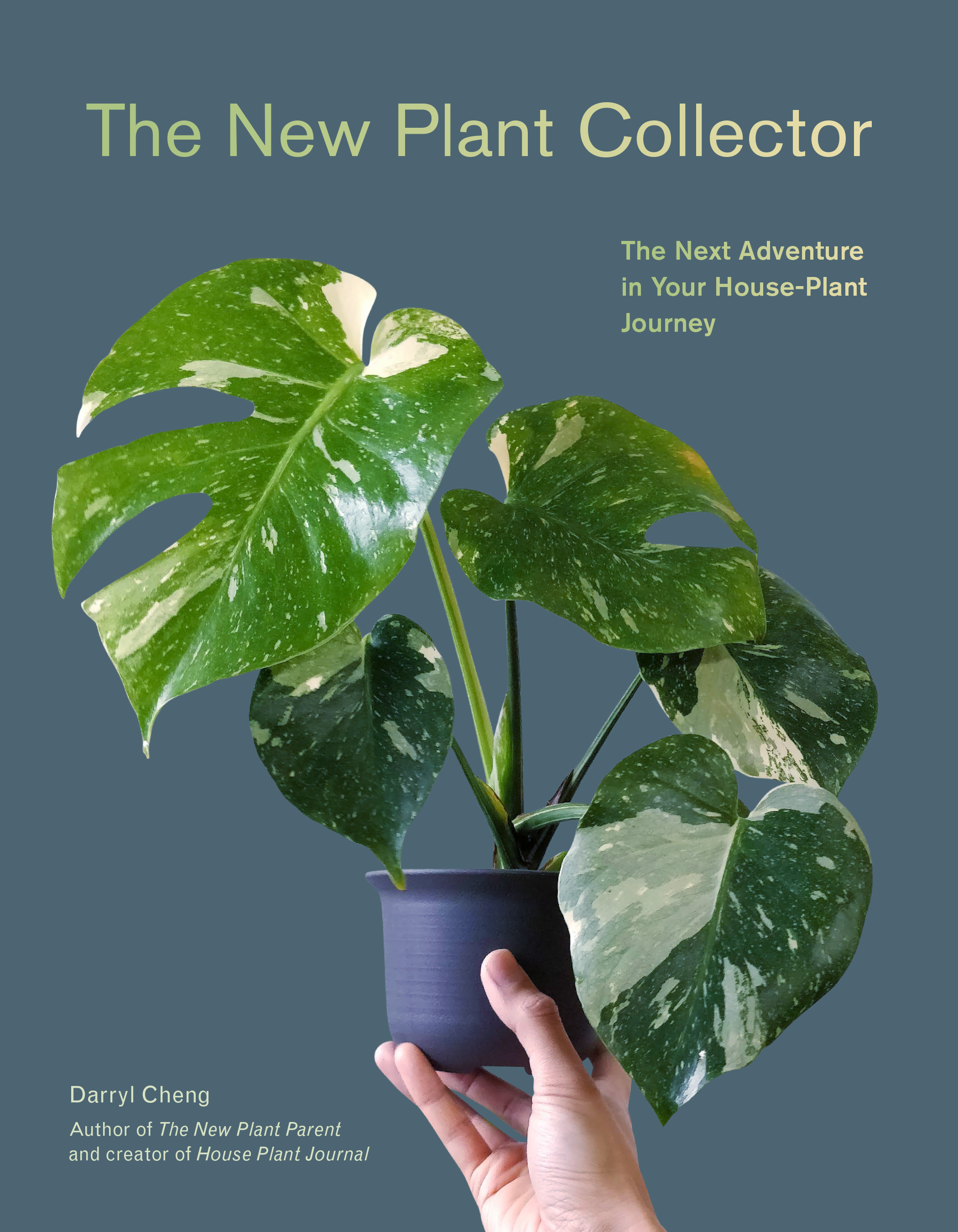The Rabbit Foot Fern (Davillia fejeensis) has to be my absolute favorite fern! I actually have two that have each been growing very well over several years – and I’m going to share with you all the key factors for long term satisfaction with this plant. Check out how my plant has grown over the past 4 years:
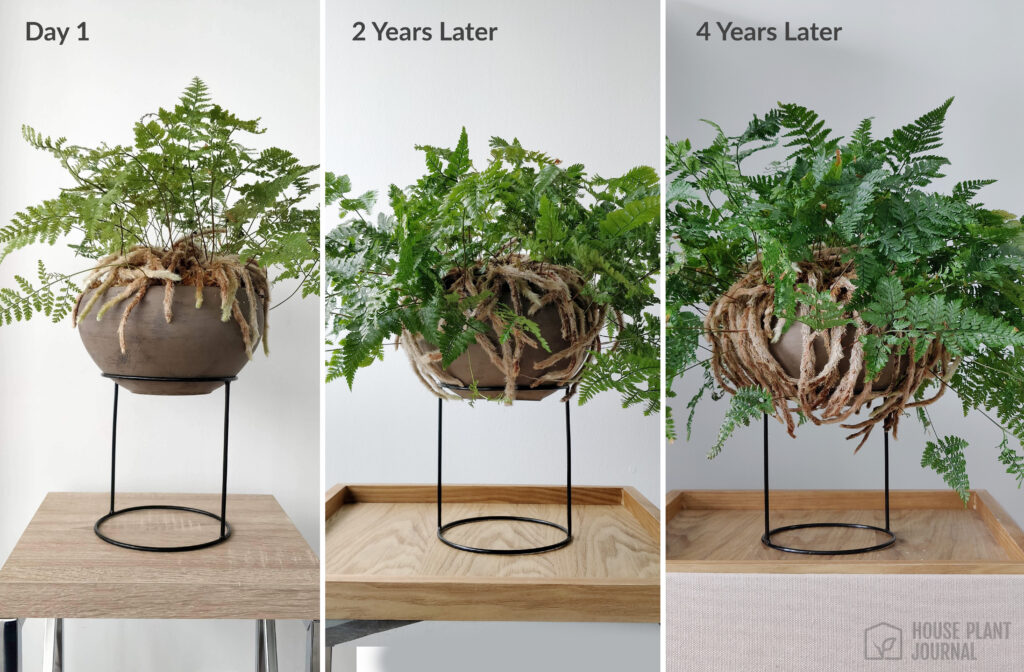
Why Davillia fejeensis is the best fern:
Intricate but Tough Fronds – fern leaves, called fronds, have always fascinated me. I love the way the start off all rolled up and expand as they unfurl. The rabbit foot fern has wonderfully intricate fronds that are actually quite tough – they’re not delicate like a Boston fern or maidenhair fern.
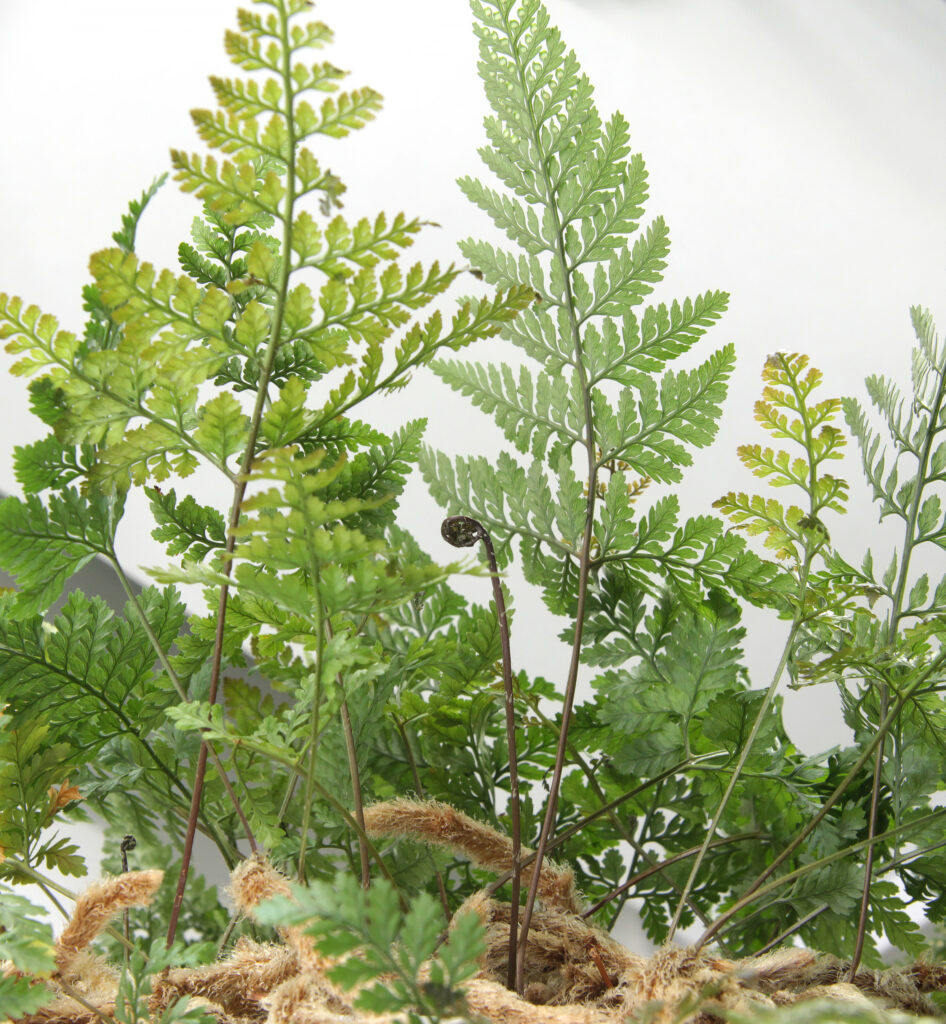
Creepy Crawling Rhizomes – this may deter some folks but for me, it’s one of the most attractive things about this plant. The fact that you can display the rabbit foot fern for both foliage and root structure interest is rare for a houseplant – displaying interesting roots is something more common with bonsai.
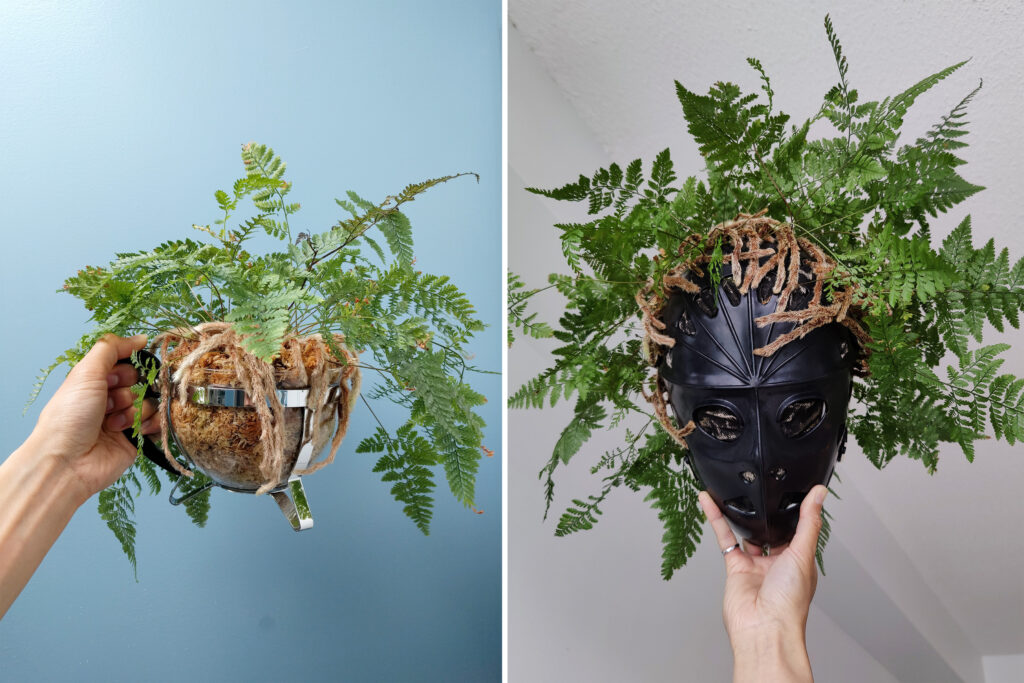
Frond Turnover: Clean and Slow – my very first fern was a Boston Fern but quickly learned that it wasn’t a great long-term indoor plant. As the natural leaf life cycle occurs, the leaflets fall off the plant making a mess all over the floor! This is why I much prefer a Boston fern as an outdoor hanging basket – the dead leaflets can just blow away with the wind. The Rabbit foot fern, on the other hand, is much cleaner because when its fronds are spent, they fall off all in one piece, which is much easier to clean up. The overall turnover rate is also (in my observation) slower than most other ferns so, given good growing conditions, your Rabbit foot fern should look fuller over time.
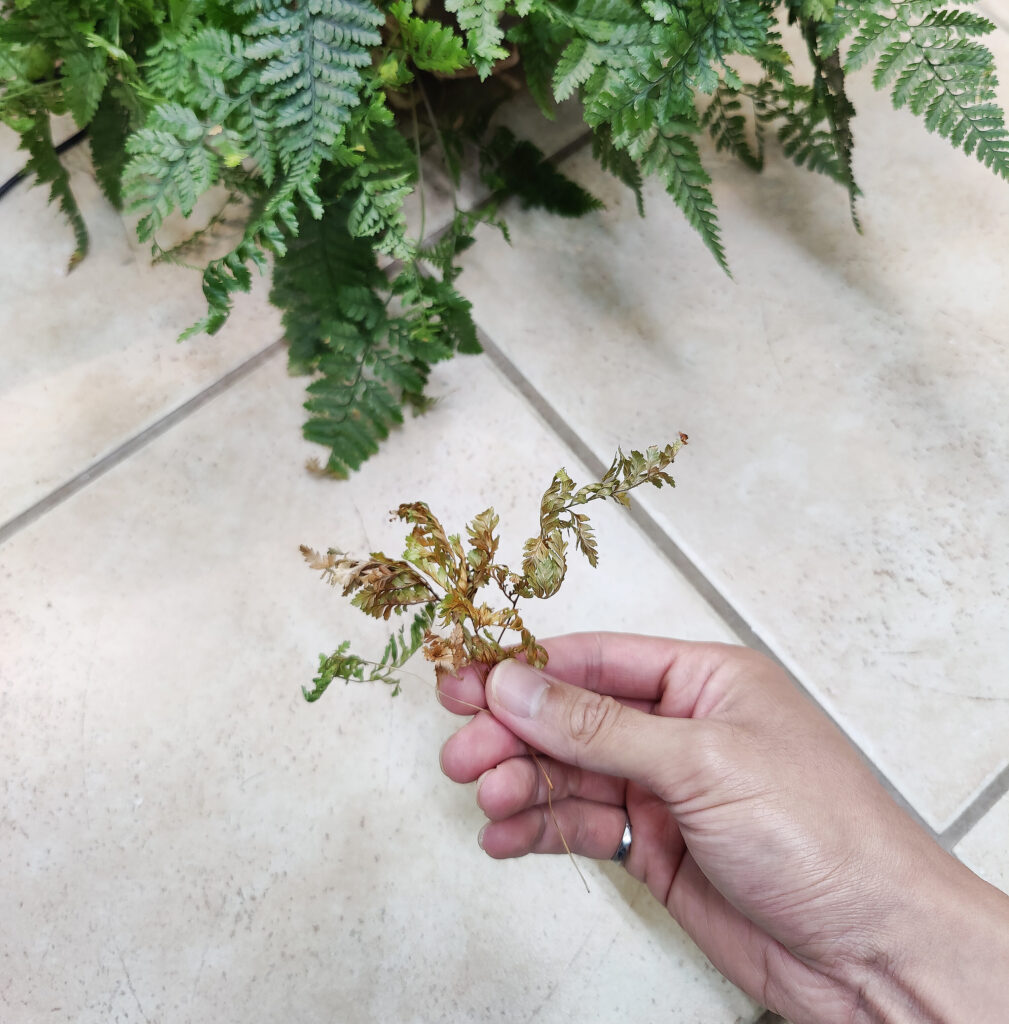
No drainage? No problem!
I’m always on the lookout for a nice pot to go with a rabbit foot fern – wanting to give those crazy rhizomes something to crawl around. I found this clay pot with a nice earthy color and round shape at a big box store but when I flipped it to see the underside, there were no drainage holes.
Did I bring out the diamond coated drill bits? Nope! Did that stop me from planting into the pot directly? Nope!
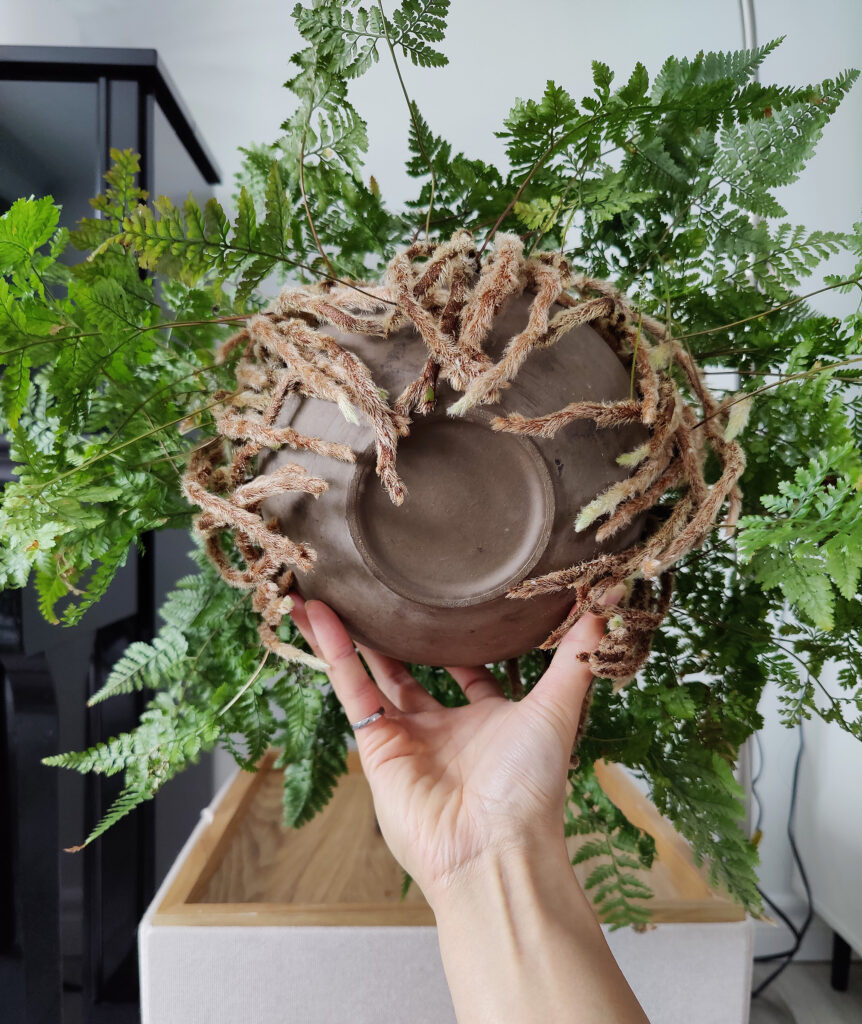
When you understand how water is used up in a pot (and which factor is the most critical) then “no drainage holes” isn’t something to worry about.
In this case, the pot was porous, which meant that moisture would leave the pot on its own over time. The other factor (this is the critical thing) was that I knew I could provide enough light for the fern to effectively use up the moisture in good time.
Suitable Lighting: Indoor Natural Light & White LED Light
Indoor Natural Light – the problem with saying “bright indirect light” is that it really tells you nothing or (even worse), it would have you believe that all you need to do it avoid direct sun. Here at House Plant Journal, I’m all about giving you concrete and objective information about lighting!
For starters, you’ll need a light meter to actually know your light levels. I made this one.
For the indoor natural light context, the two parameters you need are <tolerance of direct sun> and <range of indirect light>. For a Rabbit foot fern, it can tolerate 1 to 2 hours of direct sun. If the plant will see direct sun for longer than this, I’d suggest blocking it with a white sheer curtain. At other times of the day, the indirect light should be at the very least in the 100 to 200 FC (20 – 40 µmol) range.
More Resources: Natural Light Requirements by Plant Type
Below are two examples of different light situations where my plant has grown well:
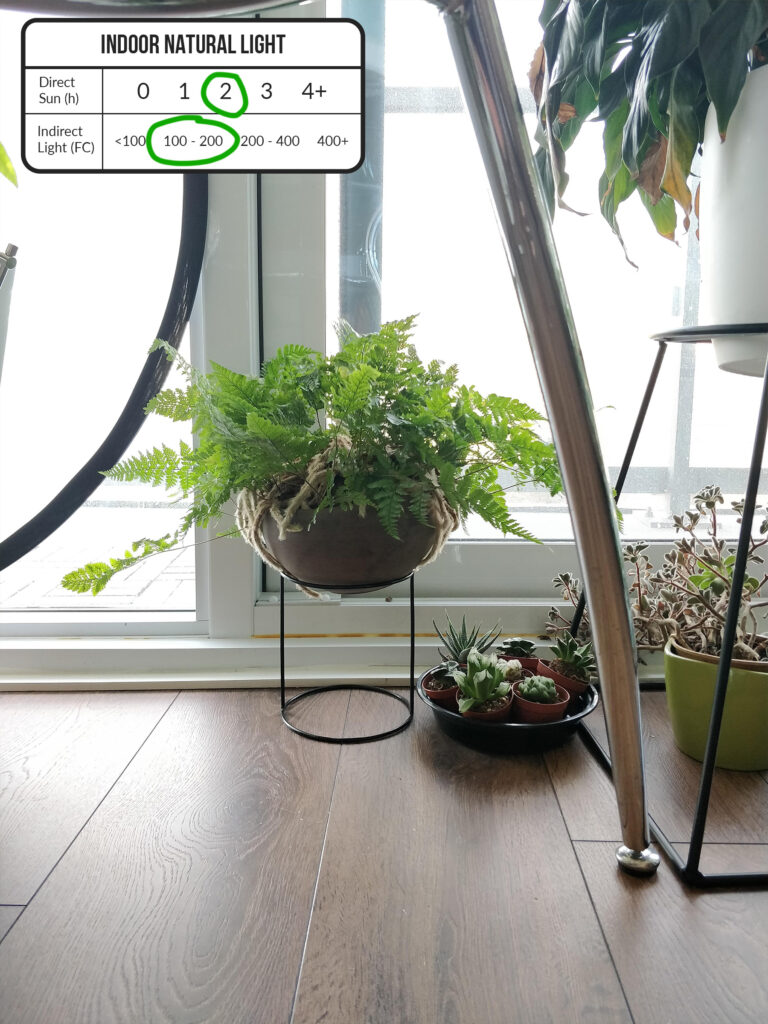
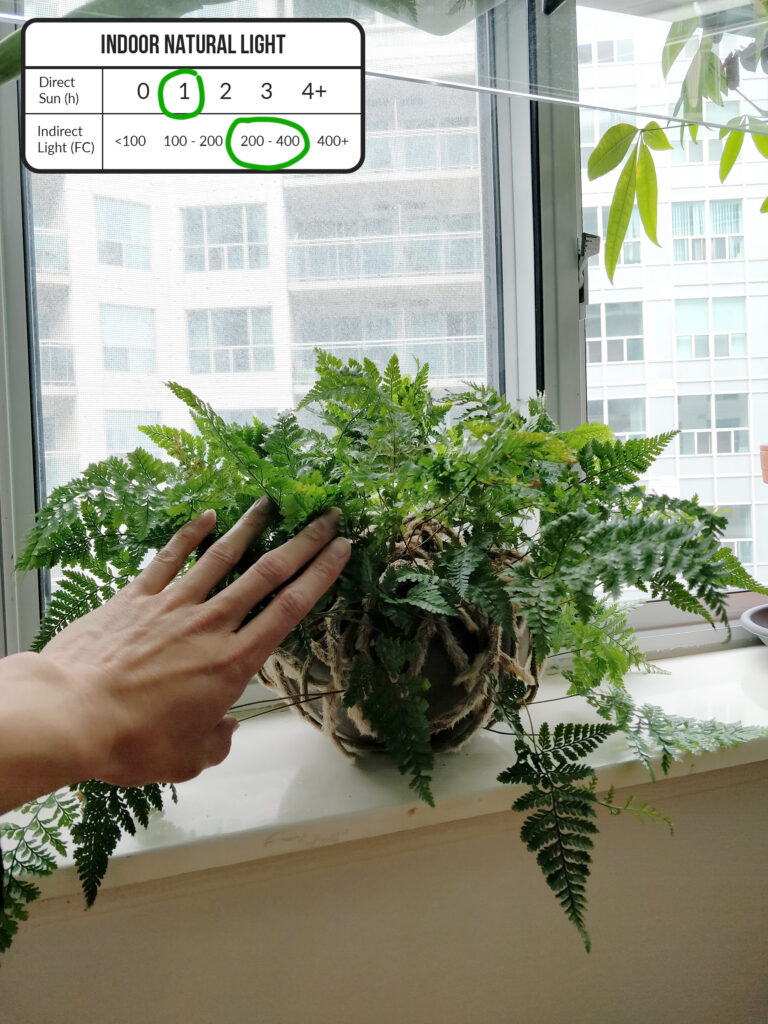
White LED Light – my houseplants sometimes get shifted around so there was one point where I lit my Rabbit foot fern purely by artificial lighting. For the grow light context, the relevant parameters are <strength> and <duration>. A bare minimum setting would be 200 FC (40 µmol) x 12 hours/day but I wanted to push mine a bit so I provided 400 FC x 14 h. Going up above 800 FC x 12 h would probably be overkill and unnecessary for this plant.
More Resources: Grow Light Strength Requirements by Plant Type
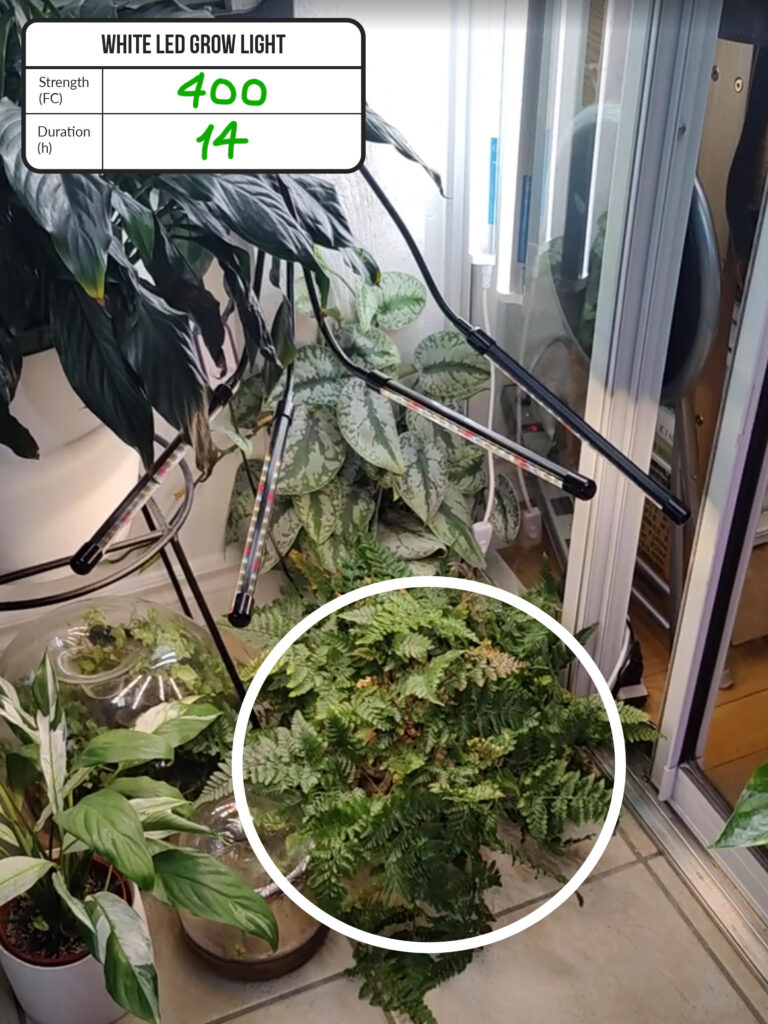
Unsuitable Lighting: Example
Whenever I get questions from people who are unhappy with how their Rabbit foot fern is growing, I always ask two questions: (1) how long have you had the plant and (2) show me where the plant lives. Using my system of indoor natural light analysis, it’s easy to tell when the situation is poor lighting:
Question: I’ve had this Rabbit foot fern for almost 2 years but it doesn’t seem to be growing many new fronds
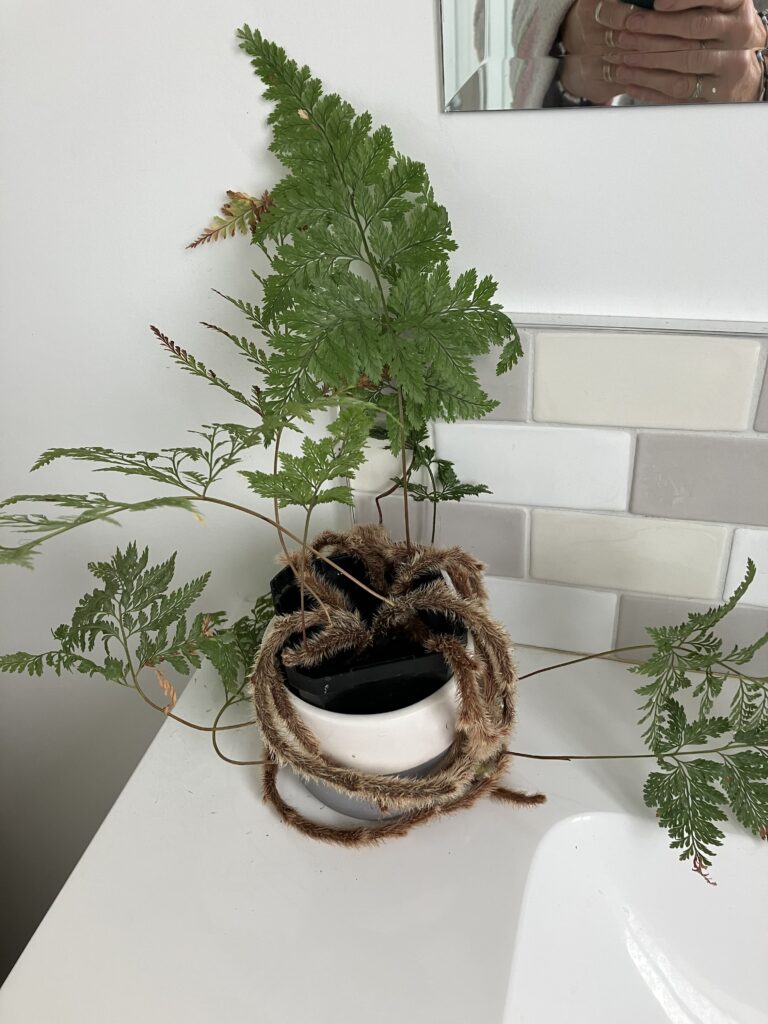
Light Analysis: the plant sits on the far side of a countertop and, as informed by the plant parent, the sun never shines directly on the plant. So the two relevant parameters would be [direct sun] = 0 hours and [indirect light] = <100 FC (this is my estimate based on experience).
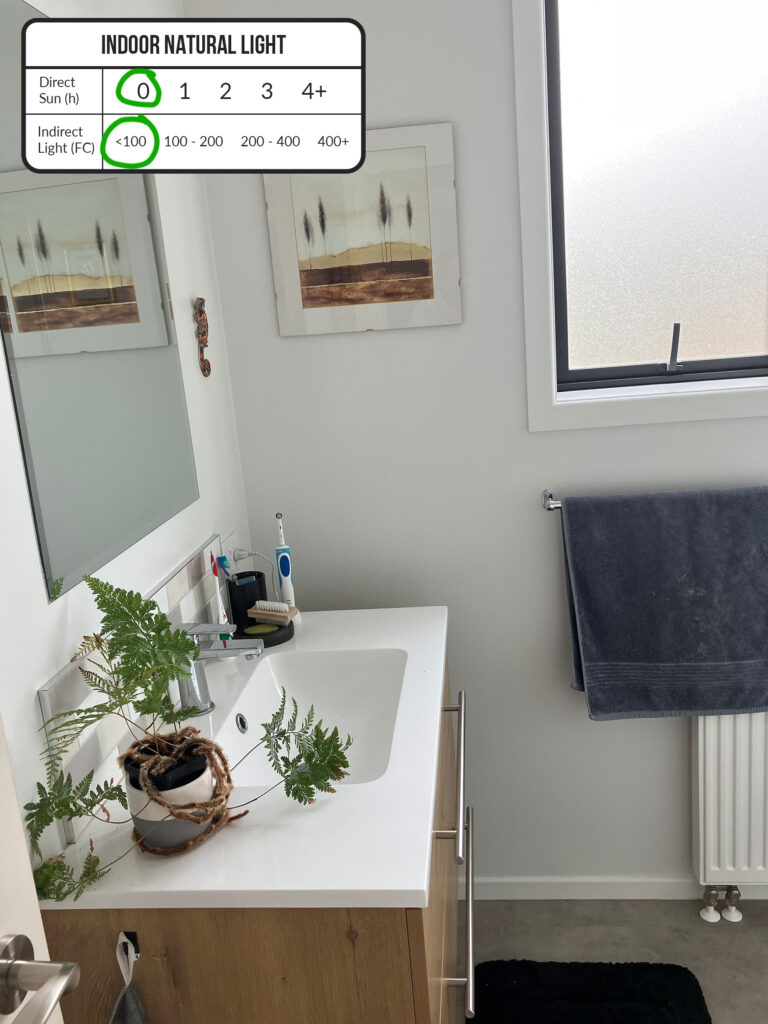
Substrates
Rabbit foot ferns can grow well in a variety of substrates. Mine are both planted in pure sphagnum moss, which was a necessity especially for the goalie mask planter (soil would just fall out). If you only have standard potting soil on hand, you could use that along with some bark chips: 2 or 3 parts potting soil to 1 part bark chips.

Watering: WHEN and HOW
Despite being called a fern, the Rabbit foot fern is not as thirsty as some others who are in the ‘keep evenly moist’ category of watering (looking at you, Maidenhair fern!). The Rabbit foot fern is surprisingly drought tolerant: when the substrate is completely dry, the fronds will droop but can recover if immediately watered thoroughly. Ideally, do not wait for the substrate to be completely dry – water when the substrate is about halfway dry.
HOW to water: whenever it’s time to water the Rabbit foot fern, give it a complete and thorough soaking – and let excess water drain away.
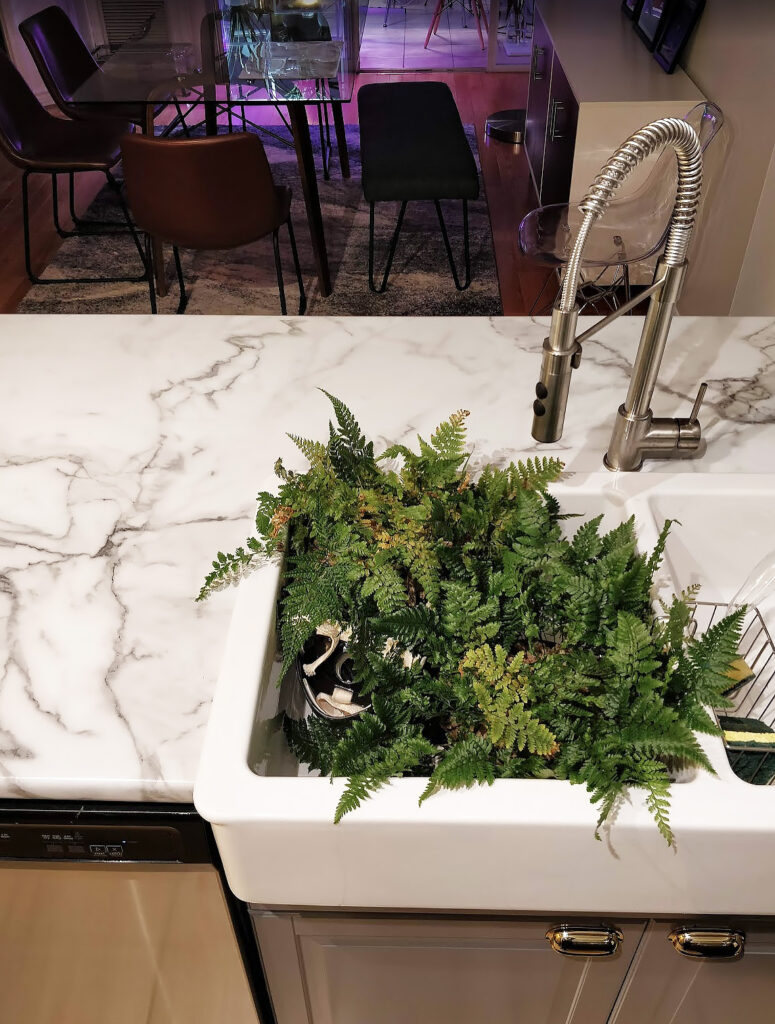
Fertilizer
As with all foliage plants, the ideal NPK ratio is 3-1-2. You can use a liquid diluted into your watering can or a slow-release fertilizer left in the substrate.
Yellowing Fronds, Brown Tips = NORMAL
There are a lot of “tips and tricks” out there that would make you think you can fix leaf yellowing or browning tips but they will all leave you disappointed. In the long term, some leaves (most likely the oldest ones) will turn yellow; some tips will turn brown. Despite this, I can say that I’m very happy with my plant – and it has grown well.
Just a reminder: here’s the PROOF that the plant has grown well:
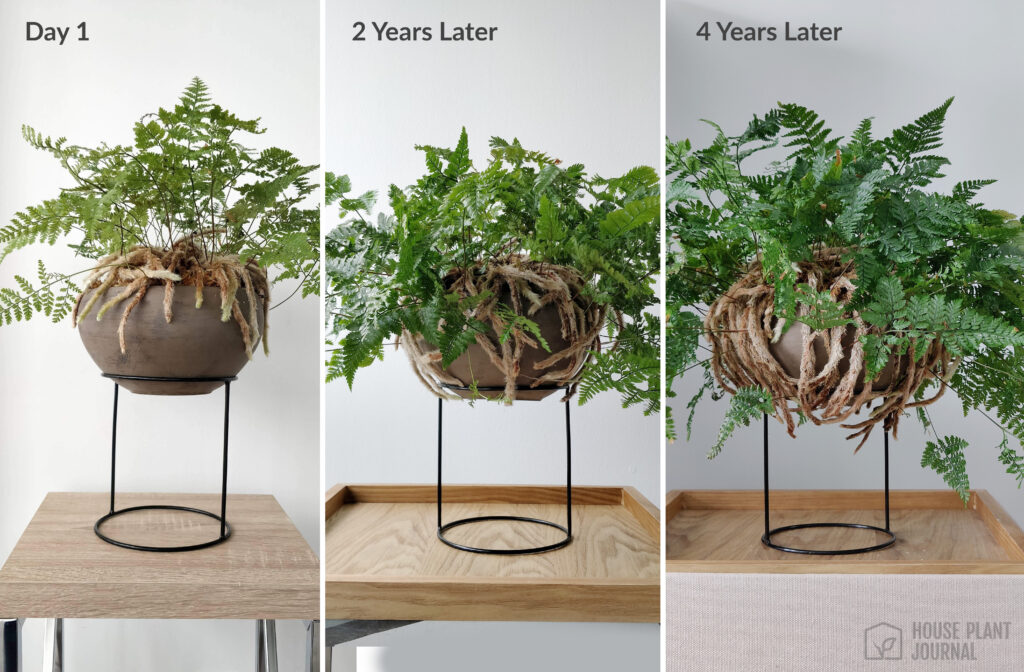
During this time, I definitely had yellowing fronds – I simply pulled them off once they were fully spent:
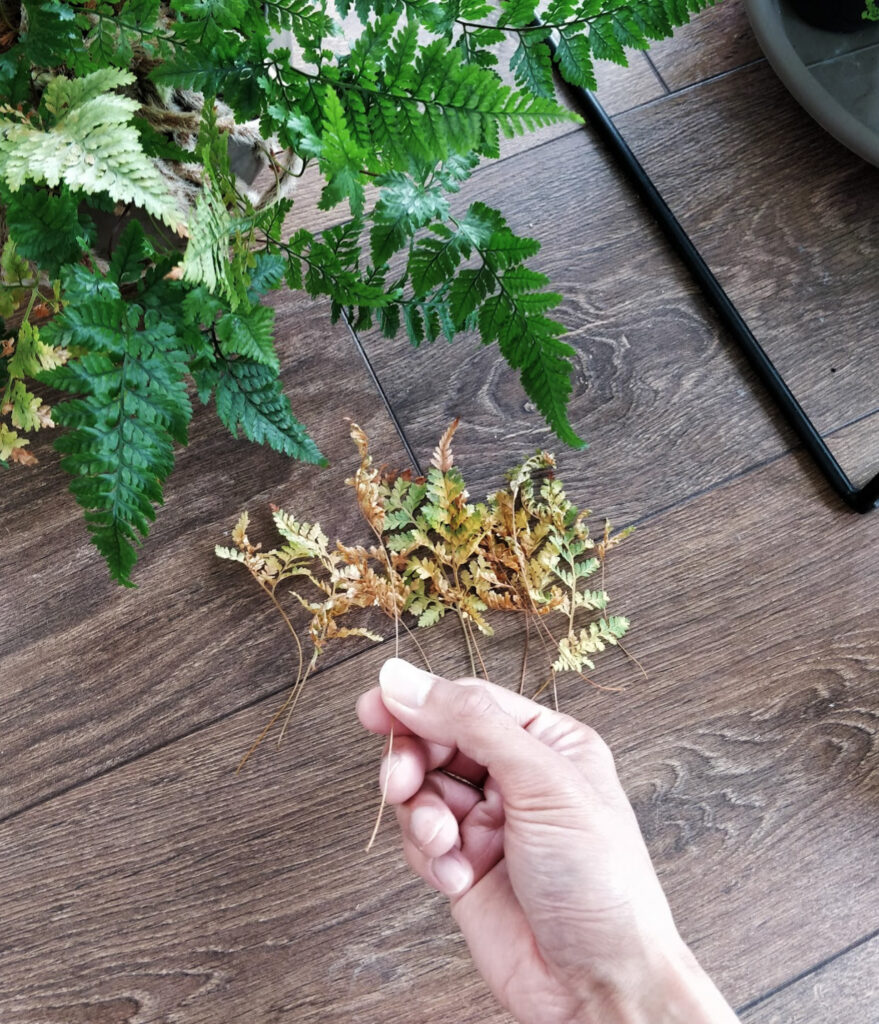
And I didn’t let small brown tips bother me…
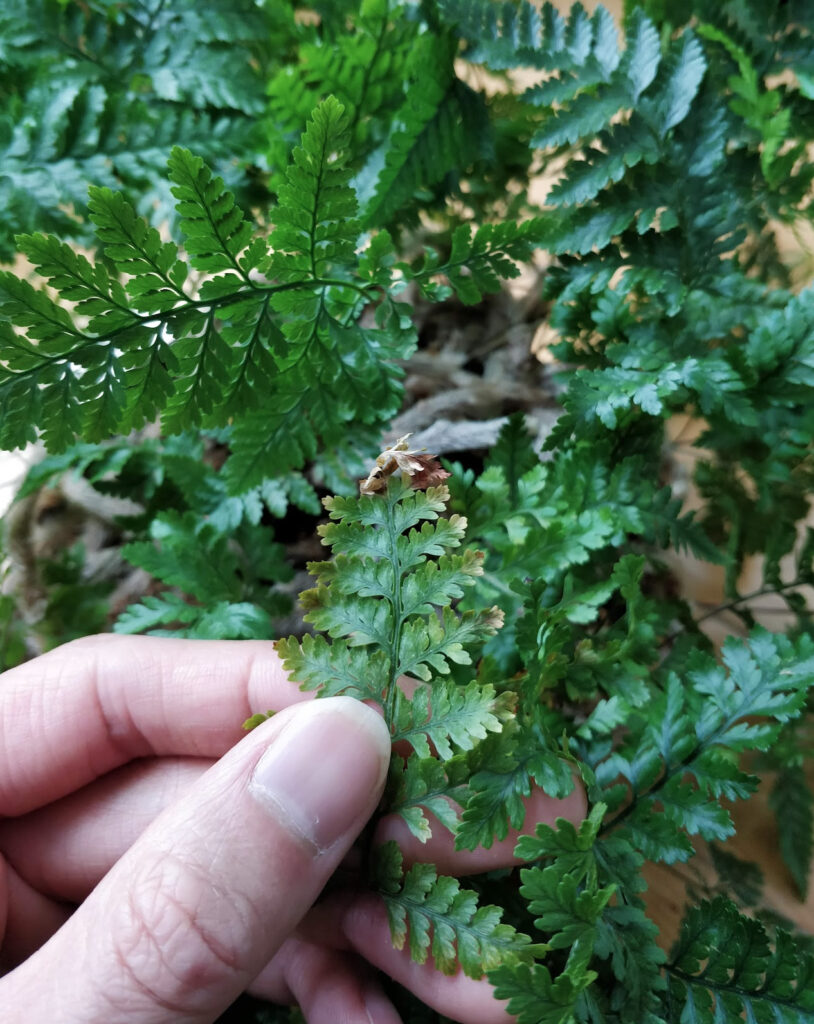
So the way that I remained satisfied with my plant wasn’t by ensuring that every frond was perfect – it was by ensuring NEW FRONDS keep growing to replace the older ones that naturally die off. This is why light is fundamental to a happy plant (and ultimately, happy you!) – good light will drive new growth so new leaf growth can outpace older leaves dying off.
I hope this helps you enjoy your Rabbit foot fern for years to come!
If you’re interested in learning better plant care fundamentals, I wrote two books I think you’ll enjoy:
– The New Plant Parent
– The New Plant Collector
